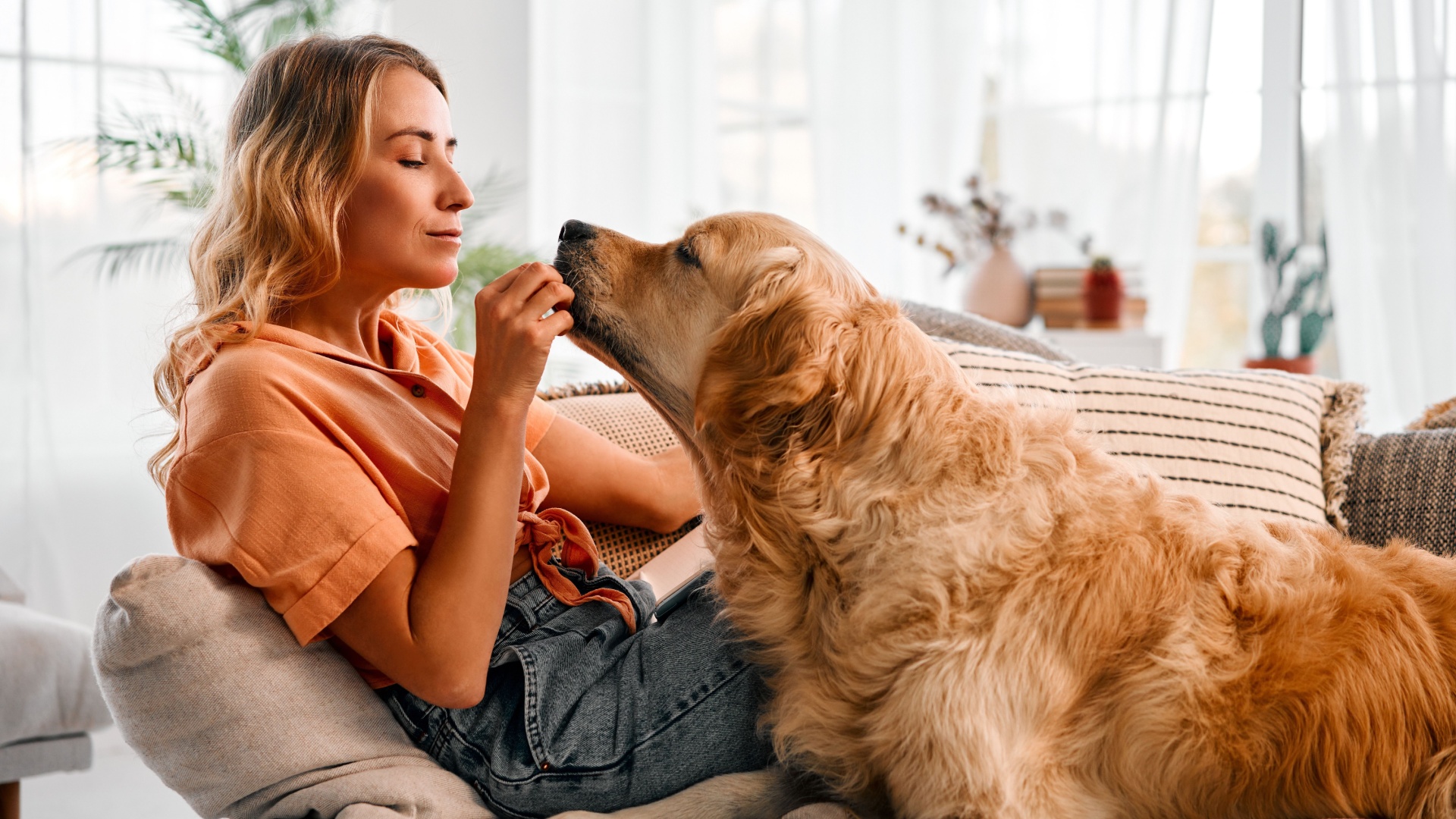Dogs may not talk, but they’re some of the best communicators in the animal kingdom! Those expressive eyes of theirs combined with their wagging tails make every movement and sound carry meaning.
If you’ve ever wondered what your dog is trying to tell you with that head tilt or why they lean against you at the perfect moment, you’re not alone! Dogs have a special way of speaking straight to our hearts without saying a single word.
I assume you’re curious – that’s good! Why not take a look at this article, and find out some fascinating ways dogs communicate using their body language, actions, and subtle signals?
By learning to understand these silent messages, you’ll strengthen your bond and gain a deeper appreciation for the incredible connection you share. Get ready to decode the silent language of dogs – you might just discover they’ve been saying “I love you” all along!
1. Tail Wagging
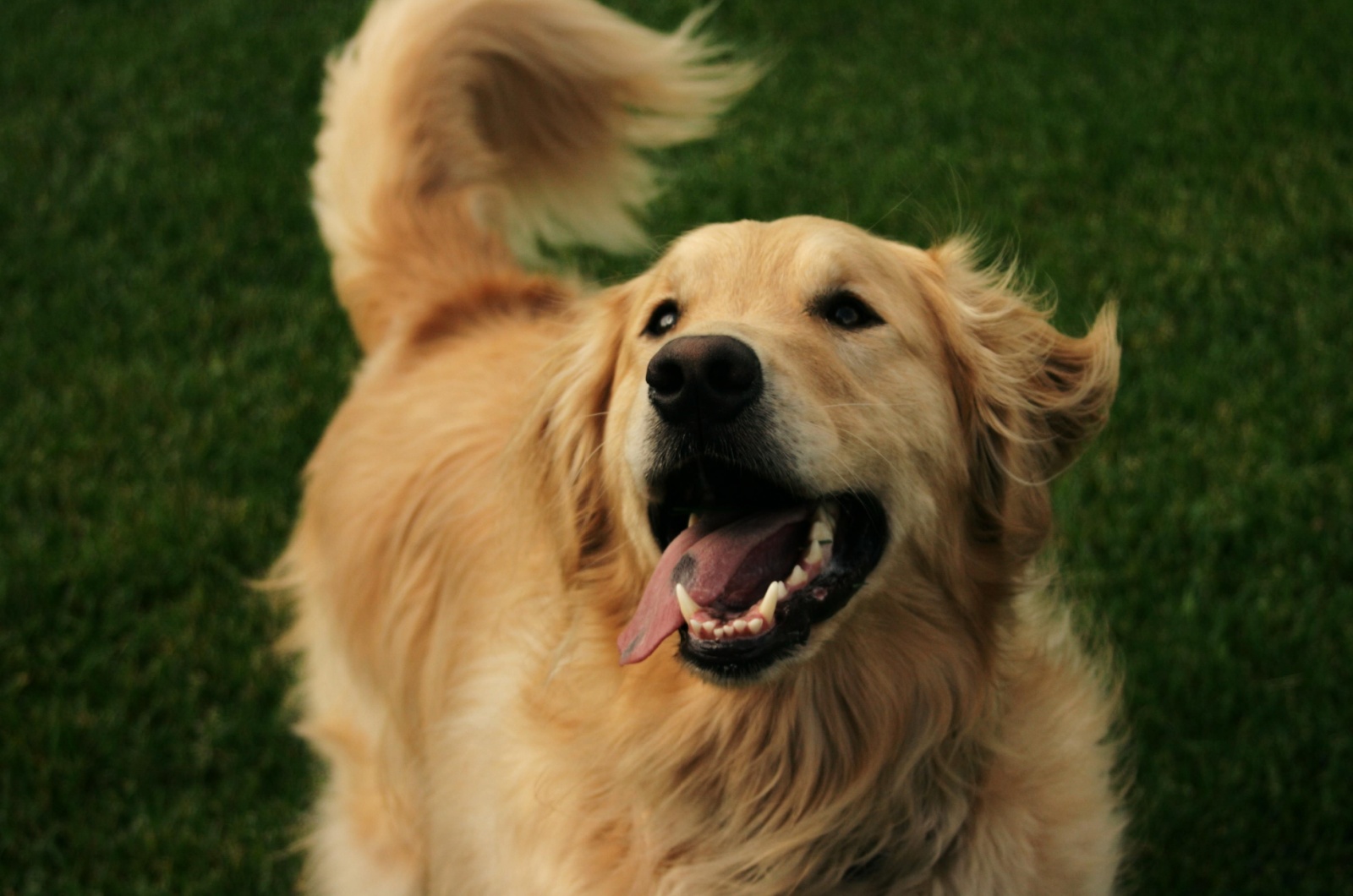
Tail-wagging can say so much more than you might think! If your dog’s tail is loose and wiggly, it’s a surefire sign they’re thrilled.
Maybe it’s because you’ve just walked through the door, or they’re excited about an upcoming walk. It doesn’t matter! Point is, they’re excited!
On the other hand, if their tail is stiff and upright, they’re likely on high alert, scanning their surroundings for potential threats.
Meanwhile, a slow wag might mean they’re unsure about a situation, while a tail tucked low can indicate they’re nervous. So many signs!
Understanding the subtle differences in tail movements is like having a window into your dog’s emotions. It can be a great help for responding appropriately to their mood.
2. Ear Position
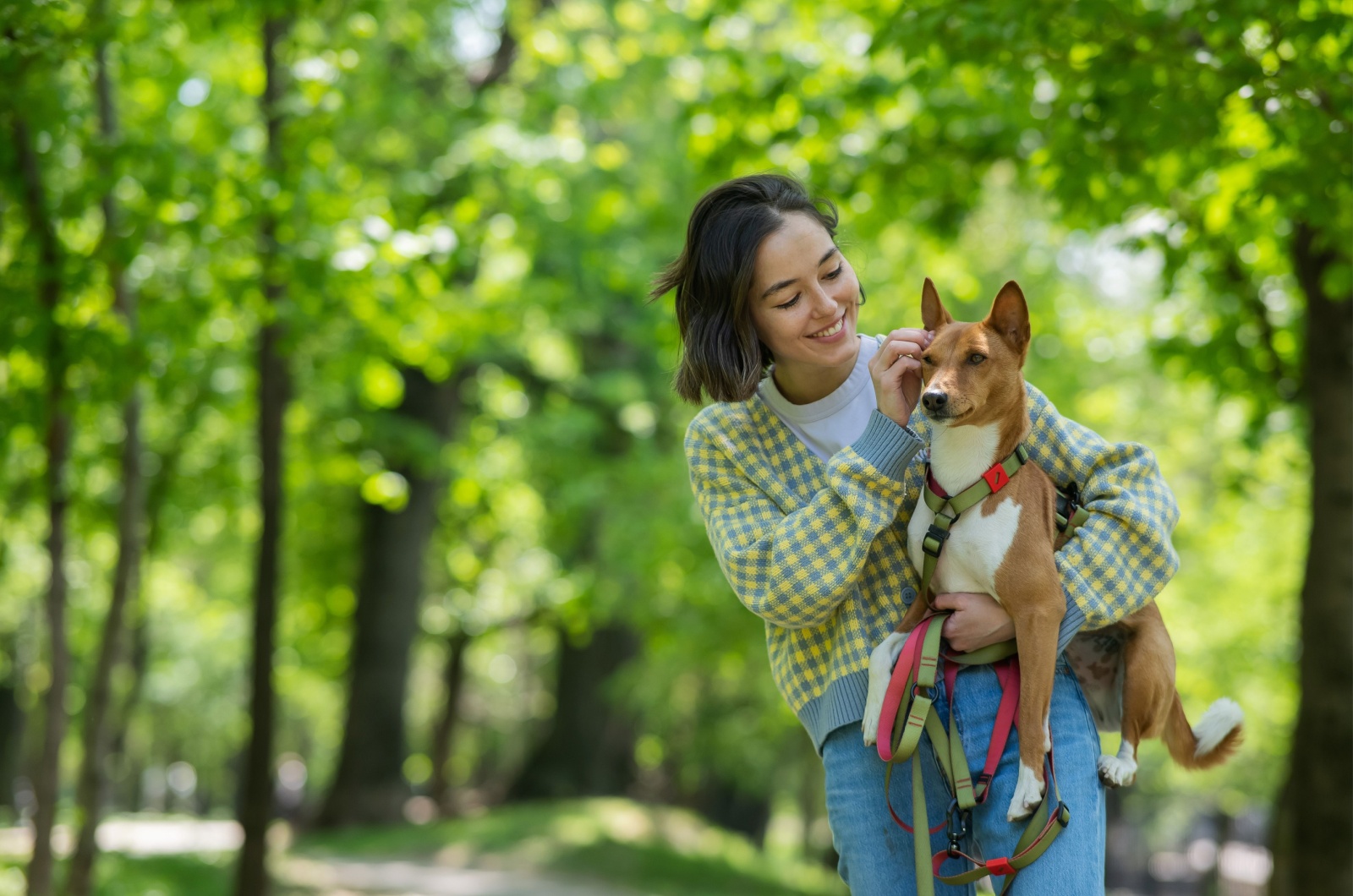
Ears are a dog’s personal mood indicators. When their ears are perked up, they’re often curious or intrigued, as if they’re saying, “What’s that sound?” or “Who’s there?”
Relaxed, floppy ears usually belong to a content, happy dog who feels safe and at ease. But if those ears are pinned back? It’s time to pay attention – they might be scared, anxious, or unsure about something in their environment!
By combining ear position with other body language cues, you can get a clearer picture of what your dog is feeling. Interesting, isn’t it?
3. Body Posture

A dog’s body is kind of like a billboard advertising their feelings. When they’re relaxed, their body will appear loose and wiggly, signaling happiness and friendliness.
This is the kind of posture you’ll see when they’re greeting you with their tail wagging and their eyes full of joy! A stiff, tense posture is a different story – it might mean your dog is nervous, uncertain, or even feeling defensive.
And then there’s the adorable play bow, where they lower their front legs and keep their butt in the air. This universal signal means, “Let’s have some fun!” Watching how they hold their body can tell you so much about their current state of mind!
4. Eye Contact And Expressions
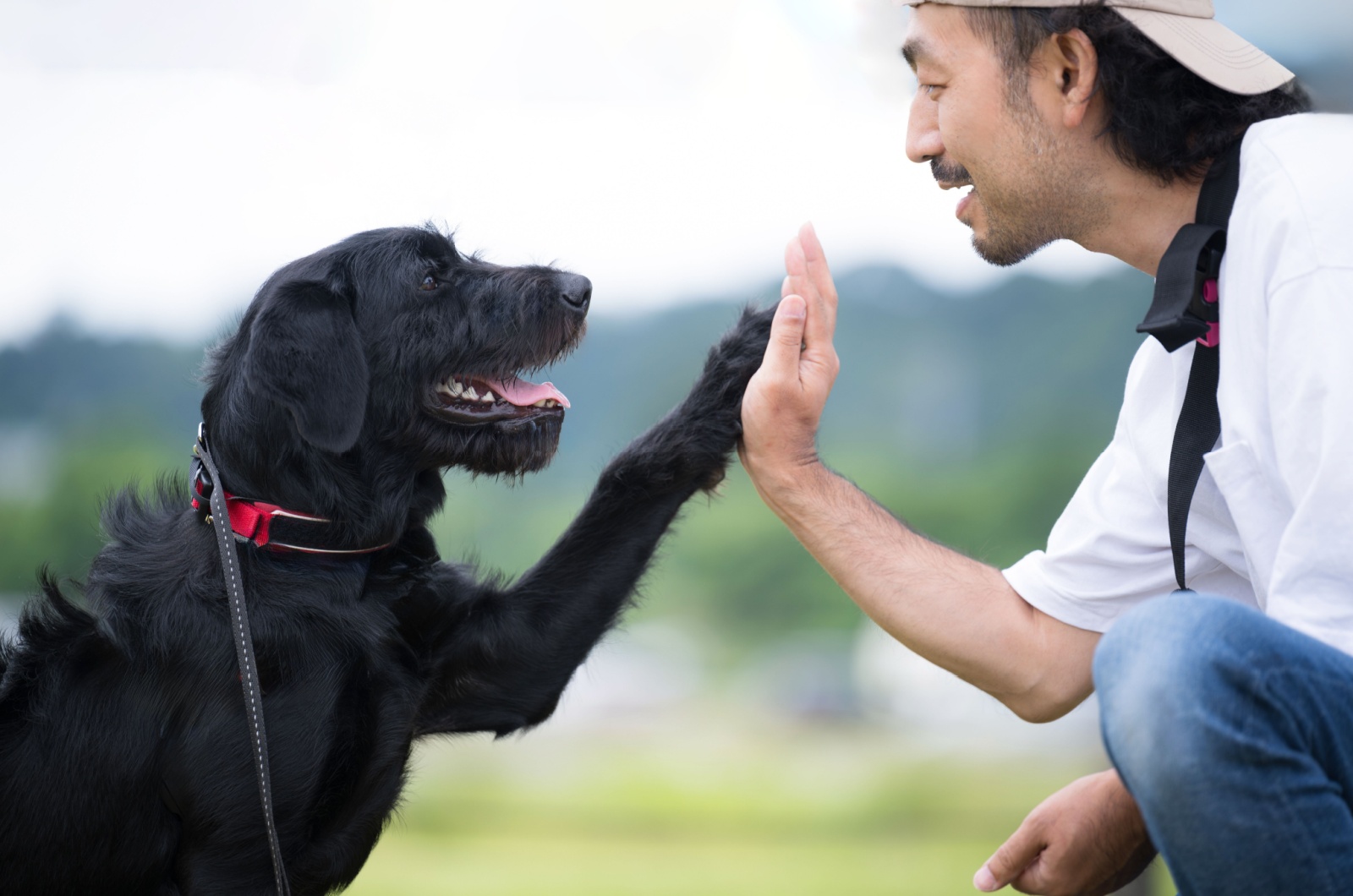
Ever felt like your dog could see right into your soul? That soulful, direct eye contact is a sign of trust and affection. It’s their way of saying, “I feel safe with you.”
However, in dog-to-dog interactions, prolonged eye contact can sometimes be a challenge or a display of dominance. If your dog avoids eye contact or glances away, it might mean they’re feeling shy, unsure, or submissive.
And those soft, squinty eyes paired with a relaxed body? That’s pure love and contentment, letting you know your pup is happy just being near you.
5. Barking And Other Vocalizations

Dogs might not use words, but boy, do they have a lot to say! A quick, high-pitched bark often means, “I’m so excited!” while a deep, low growl might be a clear warning to back off.
Whining is their way of saying, “I need something,” whether it’s a bathroom break, food, or attention. And howling? That’s the drama queen of dog communication, signaling loneliness or a need to connect.
Each bark, growl, or whine is packed with meaning, and paying attention to the context can help you understand exactly what your dog is trying to tell you.
6. Licking
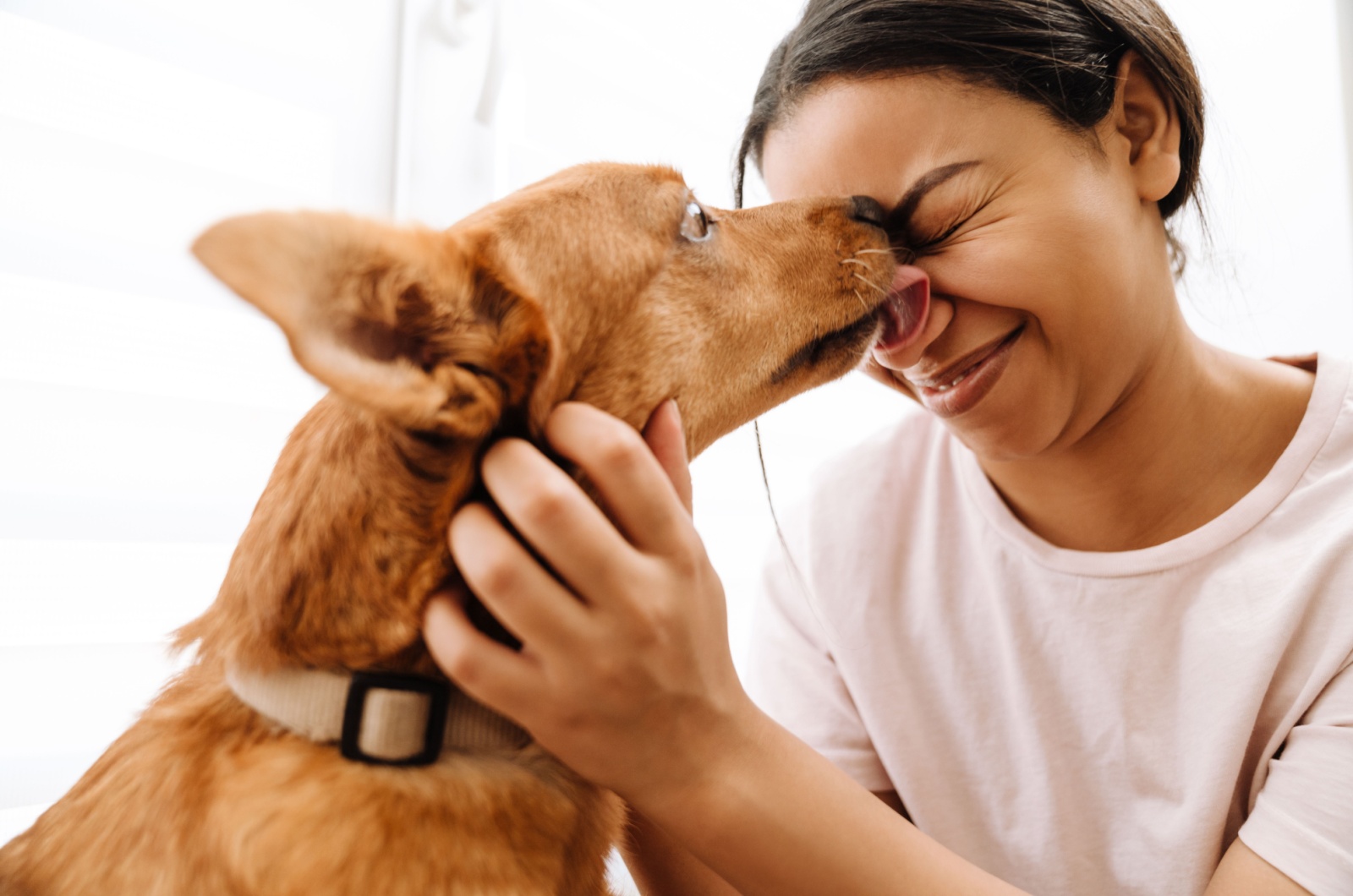
Those slobbery dog kisses are more than just affection – they’re a form of communication! One made with love, might I add.
When your dog licks you, they might be saying, “I love you,” or “Hey, pay attention to me!” Fun fact, though – puppies lick adult dogs as a sign of submission, and adult dogs might lick humans to show respect, and affection, or to ease their stress.
If your dog tends to lick excessively, it could also be a sign they’re feeling anxious. By observing the timing and situation, you can understand what’s driving this behavior and respond accordingly. Always keep your pet safe and healthy!
7. Yawning

A dog’s yawn isn’t always about being tired. Sometimes, it means, “This is stressful to me,” or “I need to calm myself down.”
For example, if you’re in a new environment, like the vet’s office, and your dog starts yawning, it’s their way of self-soothing. A yawn is like a fidget toy in that regard.
Yawning can also be a calming signal to others, letting them know your dog isn’t a threat. It’s fascinating how this simple behavior can carry so much meaning in different contexts!
8. Pawing Or Nudging
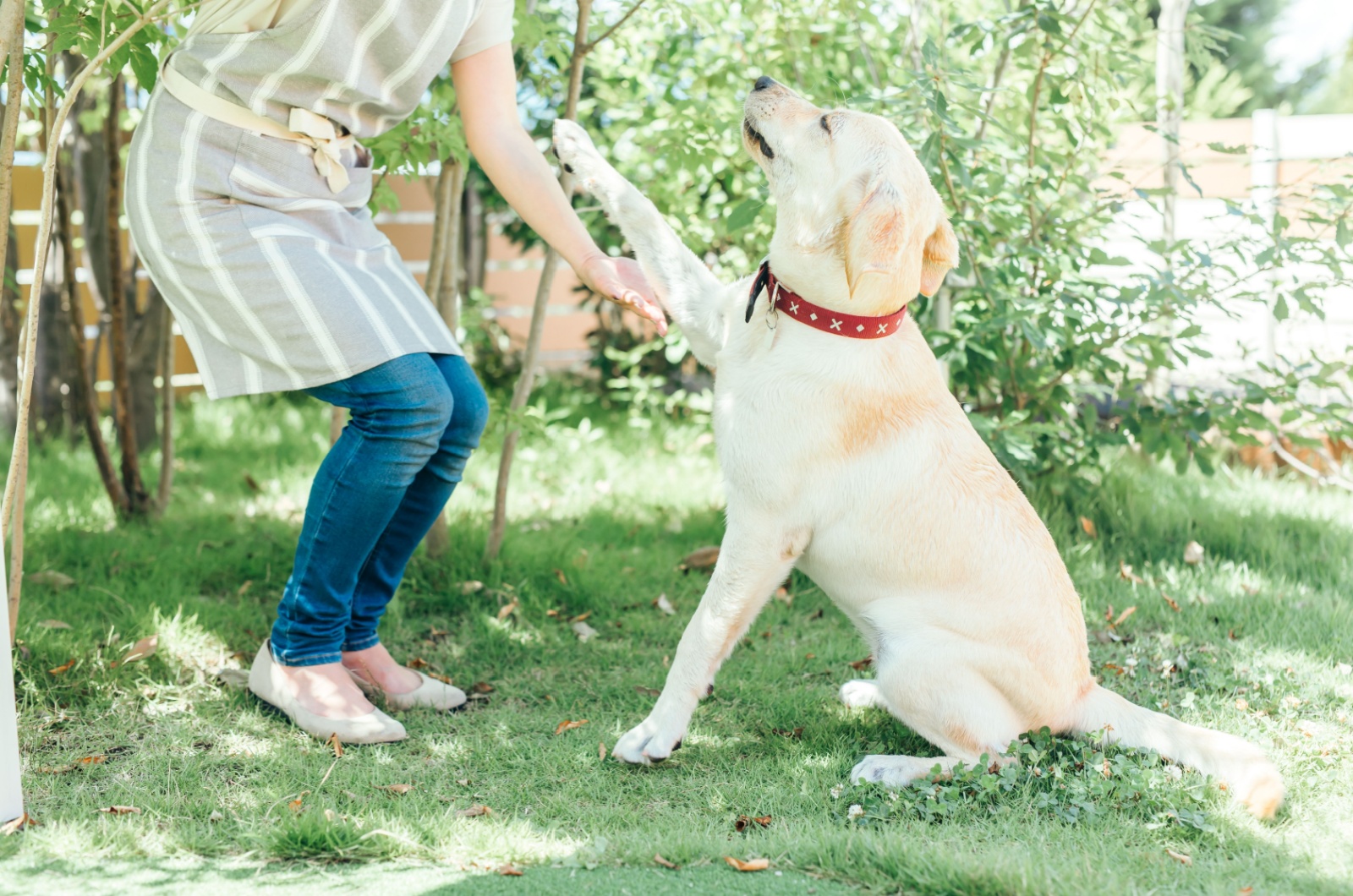
When your dog paws at you, they’re saying, “Hey, don’t ignore me!” Whether they want a belly rub, food, or just your attention, that gentle tap is their way of reaching out.
A nose nudge is often a sign of curiosity or an invitation to engage, like when they nudge your hand to get you to pet them. If they’re persistent, it’s worth checking if they need something urgent, like going outside or being fed.
This playful and endearing behavior is just one more way dogs remind us they’re part of the family.
9. Rolling Over
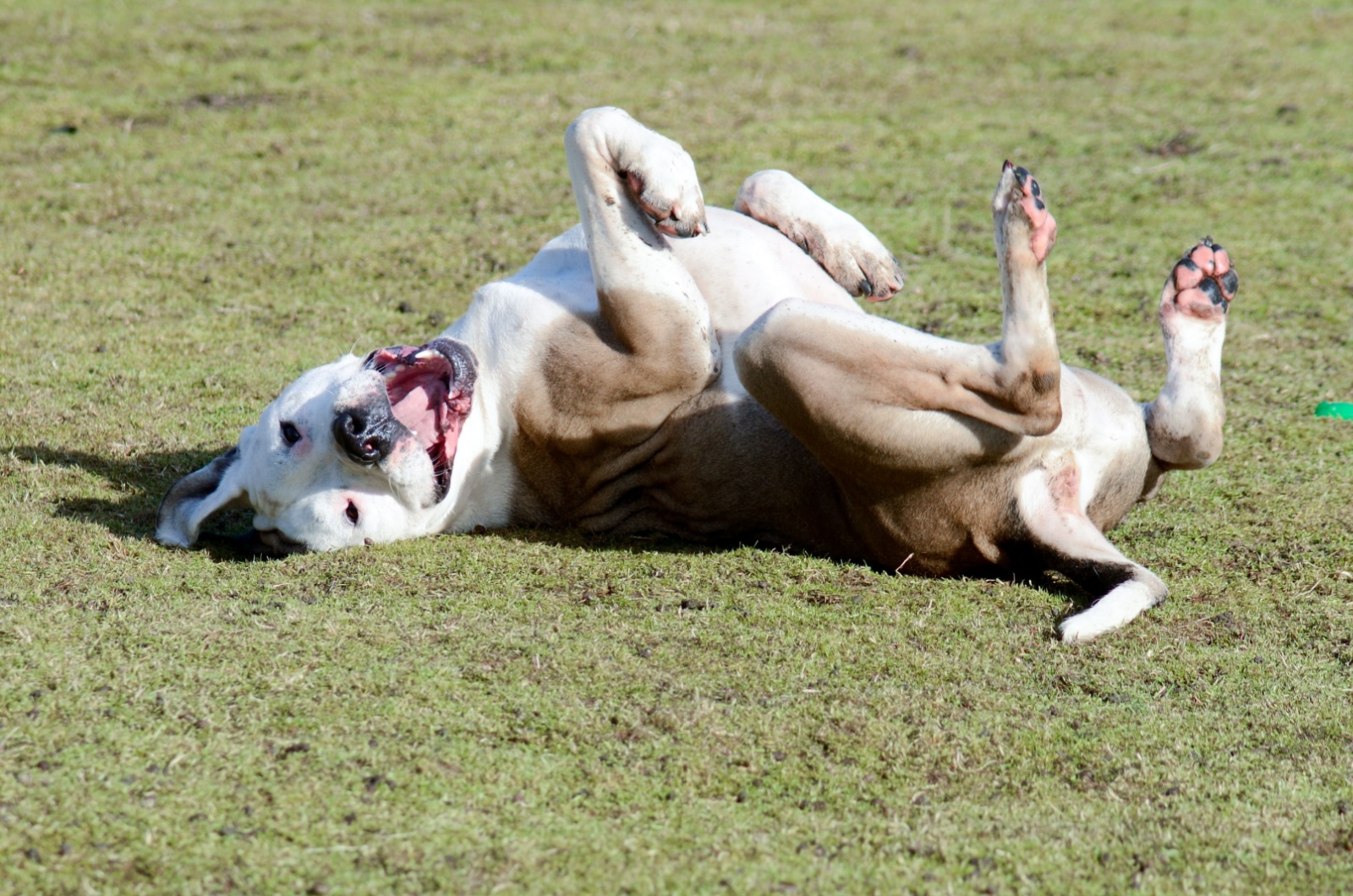
When your dog rolls onto their back and shows their belly, it’s a sign of trust and vulnerability. “I trust you completely,” or “Let’s play!” Belly rubs often follow, but not every exposed tummy means they’re inviting touch.
Sometimes, it’s a submissive gesture to show they’re not a threat. The context of their body language will help you determine whether they’re asking for affection or signaling something else.
10. Tail Tucking
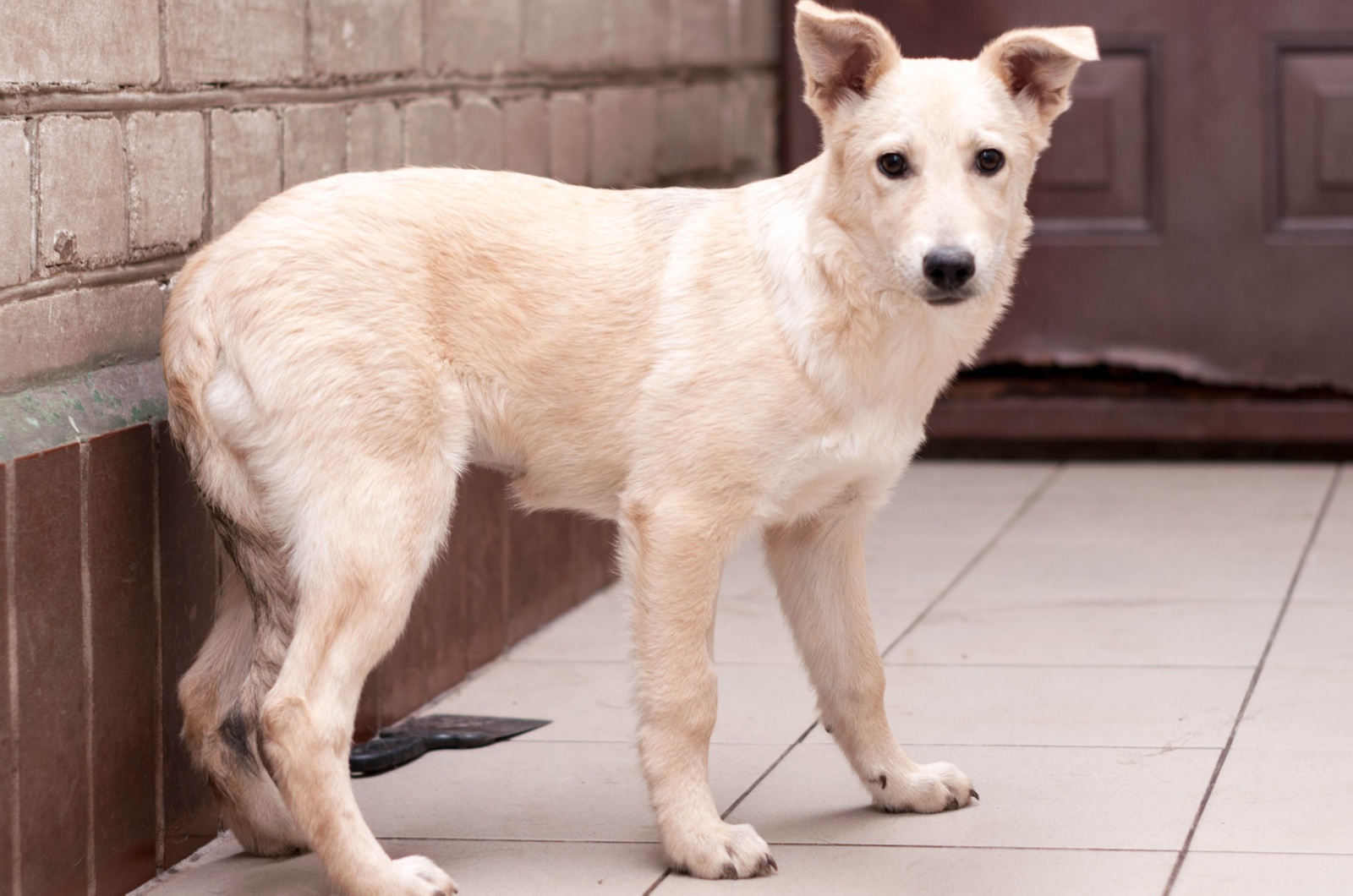
A tucked tail is one of the clearest signs that a dog is feeling scared or unsure. “I don’t feel safe right now” is what this behavior means.
Tail tucking is most often accompanied by other signs of fear, like lowered ears or a crouched posture. Sometimes, a tucked tail can also indicate pain or discomfort, so it’s worth checking if there’s a physical issue.
Understanding this signal helps you address their fears and make them feel more secure. That’s why getting rid of their anxiety asap is the best thing you can do. If they’re not calming down, consider a vet!

